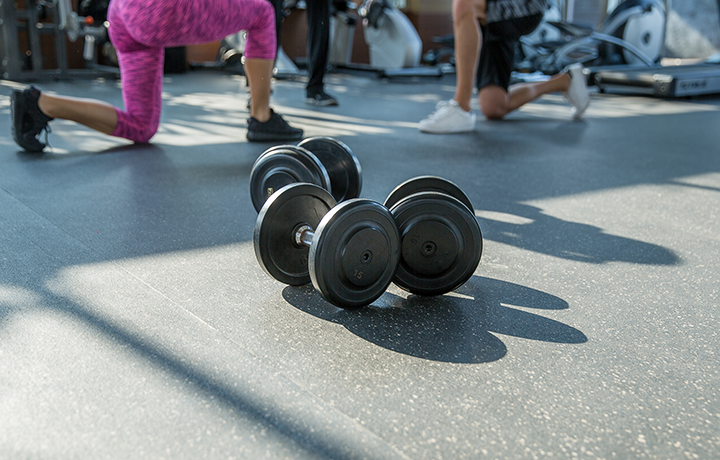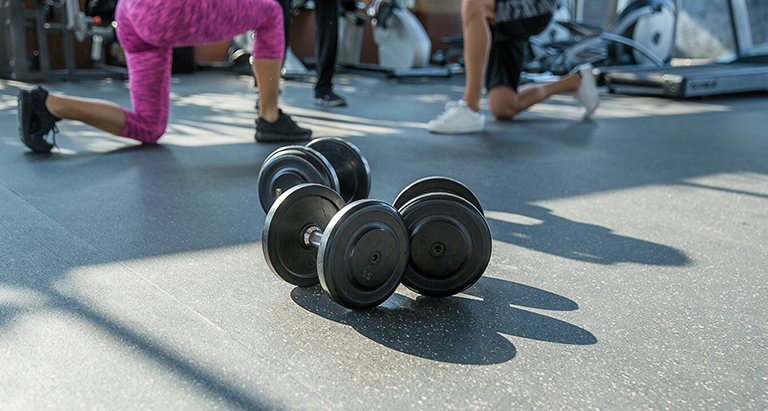Let's get physical: A beginner's guide to weights


Nervous about leaving the treadmill and walking into that room full of mysterious machines and beefy bodybuilder types? Don’t be! Weights are easy—and worth mastering. Using them can help you lose weight, and get a stronger heart, healthier joints, better bones, and a faster metabolism. Here's what you need to know about strength training:
Be prepared
This doesn't mean rushing out to buy loads of exercise equipment. “You don’t need to bring a lot of special gear to lift weights— just some comfortable clothes and footwear that offers both traction and support, like a training shoe,” says Brad Schoenfeld, PhD, an Assistant Professor in exercise science at CUNY Lehman College in the Bronx, NY.
Instead, prepare by taking the time to walk through the weight room so you know what’s where. Better yet, get a trainer to point out the highlights, and maybe offer you a few pointers to get started. Don’t be afraid to ask for help: most gyms hire trainers to stay on the floor in case members have questions. (If you’re new, be aware that many gyms include a free training session for members who’ve just joined so they can learn proper form and technique.) If your gym provides weight-lifting classes, it’s a great idea to sign up for one that has strength training elements to get familiar with some of the basic movements of weight-training and safety.
SUCCESS STORY: Hayley - the gym changed my life
Know your fitness tools
Most weight rooms include a combination of free weights (think dumbbells and barbells) and machines that use adjustable weight stacks and pulleys for resistance. Dumbbells are usually kept together on long racks and are arranged from lighter weights (2 pounds to 20) to super-heavy ones (upward of 100 pounds); they’re designed to be lifted off the rack with one hand. Barbells allow you to load weighted plates onto bars and are good for working both sides of the body together. Machines are generally designed to concentrate on specific muscle groups.
Each has its own advantages. “Most machines keep you in a fixed movement pattern—you can really push or pull in only one direction—so they’re a good place for beginners to start,” explains Rick Richey, owner of York. But eventually, after a week or so (if you’re ready), you should familiarise yourself with free weights, which more closely imitate real life movements. “Since you’re in charge of guiding the movement, you engage more muscles, while also working on important skills like balance and coordination,” says Megan Dahlman, CSCS, a trainer based in Oregon City, Oregon. “Most free weight exercises are not only more functional, they also make you work a little harder, so you get more bang for your buck.”
And don’t worry about being a newcomer among all those bodybuilders grunting and flexing around you on the weight floor. “Women are just as welcome as men. And almost everyone just wants to focus on their own thing,” Dahlman adds.
Find a weight training workout
No matter how experienced—or not—you are with weights, it’s important to have a workout plan in place from day one. “Whether it’s a good workout you’ve printed from a website or a programme that you’ve talked to a trainer about, doing a set routine with a handful of exercises will keep you on track and take away a lot of the intimidation you may feel,” says Dahlman.
As you work weights into your gym routine, it can help to note what you’re doing in a notebook or log—the exercises, weight, and number of sets and reps. “This lets you keep track of your progress and helps you stay motivated,” Schoenfeld says. Our WW journal can help you track your workouts and weight loss.
Finally, don’t be surprised if you wake up a little sore the next day. Slight soreness can actually be a sign that you’re working the muscle tissue. Try not to overdo it, especially in the beginning, Richey advises. “You don’t want to get so sore that you aren’t going to want to come back again.” Give your muscles time to recover: avoid working the same muscle group two days in a row.
Learning curve: Super simple!
You can pick up the basics of weight lifting in less than an hour, but building up strength and mastering your form can keep you challenged for months.
SUCCESS STORY: John - gym time is me time
*Before starting any new exercise routine, be sure to check in with your doctor.
